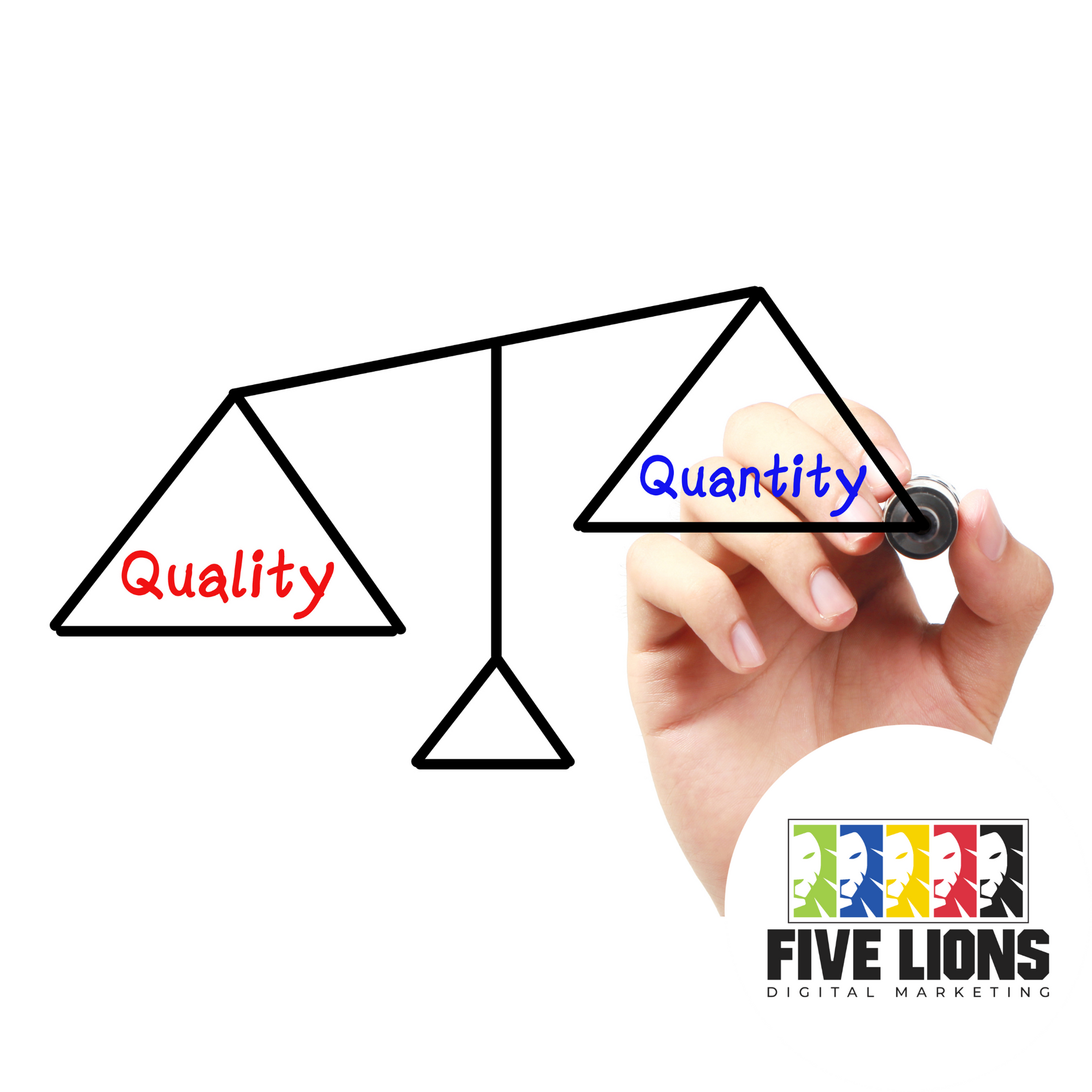
Craft a Value Proposition that Puts Your Brand in the Spotlight
In a crowded marketplace, differentiating your product or service from the competition is crucial. One of the most effective ways to do this is by crafting a compelling value proposition. But what exactly is a value proposition, and how can it help your business stand out?
This blog post is designed to guide you through the process of creating a winning value proposition that will capture your audience's attention and drive your business forward.
Understanding the Value Proposition
Before crafting your own, it's essential to understand what makes a value proposition effective. A strong value proposition clearly communicates the benefits of your product or service, differentiates your offering from competitors, and resonates with your target audience. It should answer the question, “Why choose us?” in a succinct and memorable way.
The most compelling value propositions are customer-centric. They focus on what the customer values and how the product or service meets those needs. By identifying and emphasizing the unique benefits and advantages of your offering, you can create a message that speaks directly to the hearts and minds of your target market, prompting them to take action.
The Importance of a Strong Value Proposition
A well-crafted value proposition is more than just a marketing statement—it’s a crucial element of your overall business strategy. It serves as the foundation for your marketing efforts, sales messaging, and brand positioning. A clear and compelling value proposition ensures consistency across all of these areas, helping to build trust and credibility with your audience.
In addition to guiding your marketing efforts, a strong value proposition can also inform product development and customer service strategies. By keeping the focus on delivering value to your customers, you can ensure that every aspect of your business is aligned with their needs and expectations. This customer-centric approach can lead to increased satisfaction, loyalty, and long-term business success.
Identifying Your Unique Selling Points
To develop a winning value proposition, start by identifying your unique selling points (USPs). These are the features and benefits that set your product or service apart from the competition. Consider the following questions when identifying your USPs:
- What problems or pain points does your product or service address?
- How does your offering provide a unique solution to these problems?
- What are the key benefits or advantages of your product or service compared to competitors?
By answering these questions, you can pinpoint the specific features and benefits that make your offering stand out and form the basis of your value proposition.
Knowing Your Target Audience
Understanding your target audience is critical to crafting a value proposition that resonates with them. Start by conducting market research to gather insights into your customers' needs, preferences, and pain points. This information will help you tailor your value proposition to address their specific concerns and desires.
Consider creating customer personas to represent different segments of your audience. These personas should include demographic information, interests, and behavioral traits. By developing a deep understanding of your target audience, you can craft a value proposition that speaks directly to their needs and motivations, increasing the likelihood of engagement and conversion.
Crafting a Compelling Message
Once you’ve identified your unique selling points and target audience, it’s time to craft a compelling value proposition message. Your message should be clear, concise, and focused on the benefits your product or service offers. Aim to communicate your value proposition in a single sentence or short paragraph that captures the essence of your offering.
Keep in mind that your message should be customer-centric, highlighting the benefits and outcomes your audience will experience by choosing your product or service. Use simple, straightforward language to ensure your message is easily understood and remembered. Incorporate powerful words and phrases that convey the emotional and practical benefits of your offering.
Real-World Examples of Successful Value Propositions
Learning from successful examples can provide valuable insights and inspiration for crafting your own value proposition. Here are a few noteworthy examples from well-known brands:
- Airbnb - "Belong Anywhere": Airbnb's value proposition emphasizes the unique experience of staying in diverse accommodations around the world, appealing to travelers seeking authentic and personalized experiences.
- Slack - "Where Work Happens": Slack's value proposition highlights its role as a central hub for communication and collaboration, simplifying workflows and improving team productivity.
- Dollar Shave Club - "A Great Shave for a Few Bucks a Month": This value proposition clearly communicates the cost savings and convenience of Dollar Shave Club's subscription service, appealing to budget-conscious consumers.
These examples demonstrate the power of a clear, concise, and customer-focused value proposition in capturing attention and driving engagement.
Testing and Refining Your Value Proposition
Once you’ve crafted your value proposition, it’s essential to test and refine it to ensure its effectiveness. Begin by gathering feedback from customers, prospects, and stakeholders to identify areas for improvement. Consider conducting A/B testing to compare different versions of your value proposition and determine which resonates best with your audience.
Pay close attention to metrics such as engagement, conversion rates, and customer satisfaction to assess the impact of your value proposition. Use this data to make informed adjustments and improvements, ensuring that your message remains relevant and compelling over time.
Communicating Your Value Proposition
Your value proposition should be integrated into every aspect of your marketing and sales efforts. Ensure it is prominently featured on your website, landing pages, and promotional materials. Train your sales team to effectively communicate your value proposition during customer interactions and use it as a guiding framework for your marketing campaigns.
Consistency is key—ensure that your value proposition is consistently communicated across all channels and touchpoints to reinforce your brand message and build trust with your audience. By consistently conveying your value proposition, you can strengthen brand recognition and foster long-term customer relationships.
Leveraging Your Value Proposition for Growth
A strong value proposition can serve as a catalyst for business growth by attracting new customers, retaining existing ones, and driving referrals. Use your value proposition as a foundation for expanding your product or service offerings, entering new markets, and exploring partnerships and collaborations.
Regularly revisit and update your value proposition to reflect changes in your business, industry, or customer preferences. By staying attuned to evolving market trends and customer needs, you can ensure that your value proposition remains relevant and impactful, supporting your business's growth and success.
Overcoming Common Challenges
Crafting a compelling value proposition can be challenging, particularly in competitive markets. Common challenges include differentiating your offering from competitors, clearly communicating your unique benefits, and aligning your value proposition with customer needs. To overcome these challenges, focus on conducting thorough market research, leveraging customer feedback, and continuously testing and refining your message.
Remember that your value proposition is not set in stone—it's a dynamic element that should evolve as your business and market landscape change. Be proactive in identifying opportunities for improvement and adaptation, ensuring that your value proposition remains a powerful tool for driving engagement and growth.
Conclusion
Crafting a winning value proposition is essential for standing out in a competitive marketplace and capturing the attention of your target audience.
By understanding the components of a strong value proposition, identifying your unique selling points, and tailoring your message to resonate with your audience, you can create a compelling proposition that drives engagement, conversion, and business growth.
Take the time to test and refine your value proposition, ensuring that it remains relevant and impactful over time. By consistently communicating your value proposition across all marketing and sales efforts, you can strengthen your brand's reputation and foster lasting customer relationships.
Ready to Elevate Your Marketing Strategy?
At Five Lions Digital Marketing Agency, we're passionate about helping businesses like yours thrive in the digital landscape. Our expert team specializes in crafting personalized strategies that align with your ideal client profile, ensuring your brand stands out and connects with the right audience. Contact us today for a consultation, and let's build a powerful strategy that drives results.

Five Lions Marketing Agency
We are the premier digital marketing solution in Frederick. Contact us today to get your free, no-obligation consultation!






